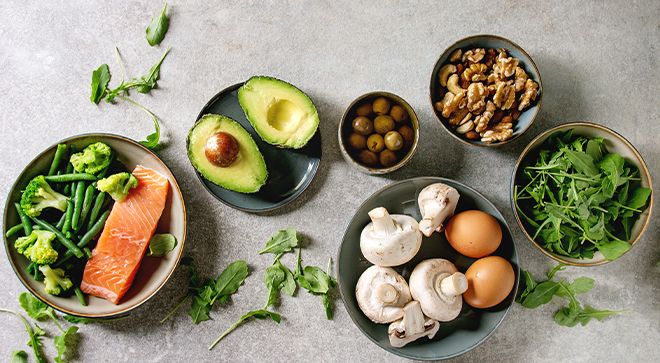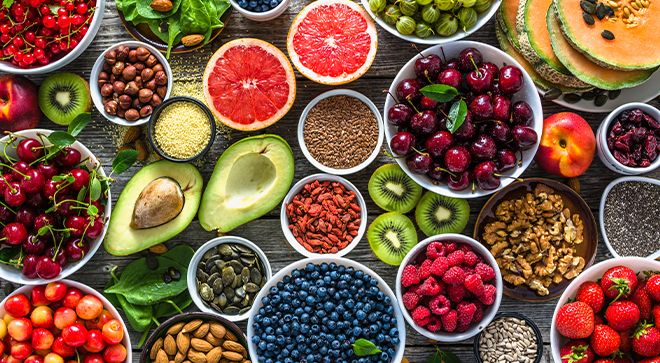Article
Heart Health and Cancer Survivors
Author(s):
Chances are you or someone you know and love has been touched by heart disease and cancer survivors are at even greater risk.
Each year, heart disease is responsible for about 1 in 7 deaths with nearly 800,000 Americans suffering a heart attack—making it the nation's leading killer. Chances are you or someone you know and love has been touched by heart disease.
Cancer survivors are at even greater risk for heart disease. Cardiovascular complications are common long-term risks for patients with breast cancer, non-Hodgkin’s lymphoma, leukemia, prostate cancer and colon cancer. Talk to your doctor about your individual risk level. After cancer treatment, or in patients with stable disease, nutrition therapy shifts toward health promotion and chronic disease prevention.
It’s easy to feel powerless, especially when there is so much information out there (my own included) and advice you get can be confusing and even contradictory.
It is true that there are elements of heart health outside of our control. But so much can be done to improve our wellbeing. You have more control than you might think and it is never too late to start. Seize control with this guidance on simple lifestyle changes that can reduce your chances of a cardiac event. A healthy lifestyle can cut the risk of a heart attack by one third to one half!
The healing power of a heart-healthy diet starts with more plants and healthy fats, less meat and added sugars. Diet advice used to focus on the numbers. How many grams of fiber and how many milligrams of sodium. And so on. This is a problem because we don’t eat nutrients, we eat food! So, eating the numbers doesn’t make any practical sense and it’s frustrating and confusing. Focusing too much on specific nutrients instead of overall dietary patterns can also be harmful especially in the long run. Or for example, a low-fat diet can be pretty unhealthy for your heart when you’re eating lots of processed grains, added sugars and processed foods without enough heart healthy fats like nuts and olive oil. Eating a true heart healthy diet can be powerfully effective. So powerful, it turns out that it can reduce heart disease risk by about 30 percent, which is similar to taking cholesterol-lowering drugs!
Try these simple rules for healthy eating and watch your heart numbers do the math for you.
1. Eat simple, whole foods. Get as much nutrition from a variety of completely unprocessed foods as you can. This includes vegetables, fruits, beans, lentils, nuts, seeds and whole grains. These should represent the focus of meals. These foods contain heart-protective antioxidants, fibers and healthy fats. Specific foods have been linked to reducing heart disease risk but again, let’s take a macro view and realize that an overall healthy plant-based diet has an even greater effect like how each instrument contributes to the overall symphony.
2. Meat is a condiment. Try to think of animal products including chicken, turkey, beef and pork as condiments to help flavor the plant foods in rule #1. Red meats including beef, pork, lamb, goat, veal should be limited to about 18 oz per week. Try to avoid the processed stuff like bacon, deli meat and sausages. Harvard Health researchers linked a daily serving to increased risk of early death from heart disease and the World Health Organization has it listed as a carcinogen.
3. Limit added sugars. Too much added sugar raises blood pressure and cholesterol levels according to a 2014 review in the journal, Open Heart. Added sugars are hidden in just about everything. Over 70 percent of all foods from the grocery store have added sugars. In fact, there are over 50 different names for added sugars in processed foods. Do you know them all? Added sugars provide zero nutrition and they easily contribute to weight gain, diabetes and inflammation. Review not only nutrition labels but also the ingredient lists to help identify those sneaky added sugars. Limiting sweetened beverages is a good start. Even just one soda per day can increase the risk of diabetes by about 20 percent!
4. Banish fat fear. We’ve developed an almost abject fear of eating fat. But many fatty foods are rich in heart healthy unsaturated fats like avocados, fatty fish like salmon, nuts, seeds and olive oil. Saturated fat sources, like meats, full-fat dairy and butter should still be limited. Trans fats are those made commercially with partially-hydrogenated oils should be avoided. Saturated and trans fats cause the body to produce more cholesterol, which then get deposited on artery walls. Swap out saturated and trans fats for the unsaturated varieties. Do not swap out saturated and trans fats for sugary foods or processed foods such as white bread, white rice, cereals and low-fat products. Using some olive oil and a wee bit of grass-fed butter and a tiny pinch of salt are what make those veggies taste so good.
5. Banish egg fear. It kills me when people think they should avoid eggs because they are high in cholesterol. Cholesterol in food has a very small impact on your cholesterol levels. (It’s the saturated and trans fats that need to be avoided. Review rule 4). So, eating foods that are high in cholesterol but low in saturated fat, like eggs, lobster and shrimp are fine! On a busy weeknight, I often fry an egg in a little olive oil and have it over leftover veggies. Home cooked dinner, done.
6. Curb processed foods. You don’t need to avoid everything in a bag or a box but processed foods are high in processed grains, sugars and salt. Heavily processed foods are the ones that do not resemble any naturally occurring food, like soda, donuts, cookies, candy, pizza and frozen dinners. These are the brain-children of food manufacturing companies that almost always include sweeteners, oils, fillers, texturizers, colors and preservatives. These foods densely stuff in calories, salt, sugar, oils and well, junk. Foods like chips, cookies and cereals are eating up larger and larger portions of our diets. People who are eating large amounts of heavily processed foods have worse health outcomes. Heavily processed meats like hot dogs and sausages increase risk for colon cancer and should be minimized
7. Get cooking. Jamie Oliver said it well that “real food doesn’t have ingredients. Real food is ingredients.” Try to eat as much home-cooked food as possible. Prepare meals that follow rule 1. Cooking our own food is directly related to health. Eating at home allows you to more easily avoid processed ingredients because you have control over what you eat and what you use while cooking. Do you keep titanium dioxide and potassium bromate in your spice cabinet? People are also less inclined to overeat when eating home-cooked food. Try to have a good supply of homemade foods in the freezer and do a big Sunday cook-off to ensure that the fridge/freezer have plenty to offer for the busy week ahead. This takes time, patience, planning and preparation. Said another way, it’s hard and takes practice, practice, practice.
8. Get moving. Achieving regular physical activity is important for vascular health. The American Heart Association and the AICR/WCRF and American Cancer Society recommend at least 150 minutes of exercise per week. This is 30 minutes per day, 5 times per week. This can even be divided into two 15-minute bursts or three 10-minute bursts. Physical activity can be playing sports or going to the gym but it can also be swimming, biking or climbing stairs!
Amanda Bontempo, MS RD CSO CDN
Twitter @amandabontempo
Instagram @amandabonbon





